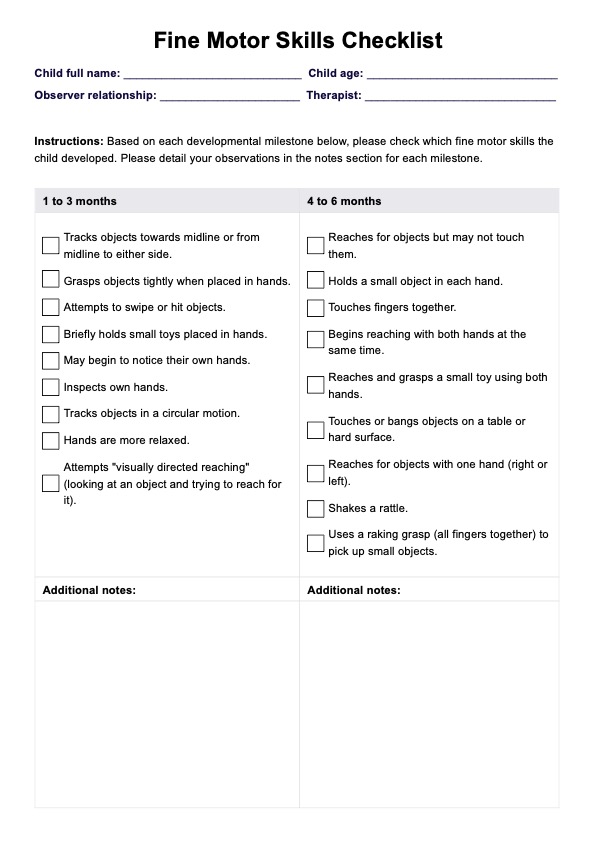In today's day and age, it's normal for children to have phones or tablets. It would be best for parents to moderate their child's time on these screens and balance it with fine motor activities to ensure they develop the skills they need.

Fine Motor Skills Checklist
Utilize this Fine Motor Skills Checklist and guide to determine if your clients are meeting essential developmental milestones or if they may require support.
Use Template
Fine Motor Skills Checklist Template
Commonly asked questions
Conditions such as dyspraxia, cerebral palsy, muscular dystrophy, arthritis, autism spectrum disorder, and multiple sclerosis can negatively affect a person's fine motor skills.
They can add activities such as paper-cutting, painting, and sensory experiences to their curriculum apart from writing and drawing.
EHR and practice management software
Get started for free
*No credit card required
Free
$0/usd
Unlimited clients
Telehealth
1GB of storage
Client portal text
Automated billing and online payments











